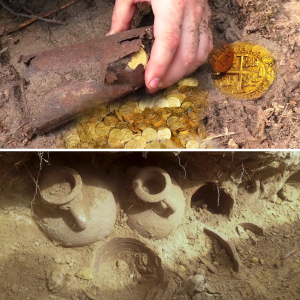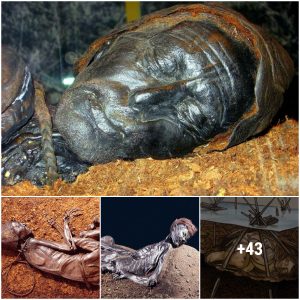There is a “lost” underground city beneath the Giza pyramids that have been well documented in the past, despite the fact that entry to it is currently prohibited by the authorities.
Let’s look at another remarkable Egyptian monument near the pyramids called the “Labyrinth” to better understand the intriguing underground metropolis beneath the Giza plateau. This Labyrinth impressed the famed historian Herodotus, who described it as “an infinite miracle” for him. The enigmatic “Labyrinth” is thought to have had astonishing dimensions, with up to 1500 rooms and an equivalent number of underground rooms that the Greek historian was not permitted to investigate. Let’s have a look at Herodotus:

“There, I observed twelve regularly arranged palaces, interspersed with terraces and arranged around twelve halls, all of which communicated with one another. It’s difficult to think they’re artificial. Carved figures adorn the walls, and each courtyard is made entirely of white marble. A 240-foot-high pyramid with enormous animal figurines engraved on it and an underground passage can be found near the corner where the labyrinth ends. All of the rooms and underpasses, I was told, connect this pyramid to the Memphis pyramids.
Memphis’ pyramids were identical to Giza’s famed pyramids. Dr. Jim Hurtak has been using ground-penetrating radars to explore the massive subsurface spaces beneath the pyramids since 1978. These rooms are reported to be larger than the grandest churches ever erected by humans.

Interestingly, several ancient authors have backed up Herodotus’ assertions regarding the underground corridors that connect Giza’s huge pyramids. It’s worth noting that Iamblichus, a Neoplatonist Syrian philosopher, also mentions a passage through the Sphinx’s body that leads to a “subterranean city” beneath Giza’s Great Pyramid:
“This entryway, which is now blocked by sand and debris, may still be identified between the hunched colossus’ front legs. It was guarded by a bronze gate that only the Magi could open. Galleries connecting to the Great Pyramid’s underground portion were cut beneath the Sphinx.”
According to some ancient literature, beneath the Sphinx is a ruler’s tomb called Plin Harmakhis, which hides a tremendous treasure. The Great Sphinx was previously known as the “Great Sphinx Harmakhis,” which is quite surprising.

Ammianus Marcellinus, a fourth-century Roman historian, also mentioned passages leading to the interior of the Great Pyramid of Giza, saying, “Certain underground galleries and passages were created under the Great Pyramid, in order to preserve the old wisdom that it would be lost in the flood.”
A text by the Arab writer Altelemsani, which is preserved in the British Museum, contains more proof of the “subterranean metropolis” beneath the Giza pyramid. The existence of a big square underground room located underground, between the Great Pyramid and the Nile River, is mentioned by Altelemsani. Something massive, according to Altelemsani, was blocking the Nile River’s entrance.
Interestingly, a writer named Masoudi stated in the ninth century that some advanced mechanical sculptures guarded the underground corridors beneath the Great Pyramid of Giza. Its description, written over a thousand years ago, is comparable to today’s digital robots. According to Masoudi, these robots were programmed to kill everyone except those who, based on their actions, deserved to be welcomed inside.
Despite the fact that ancient literature mentions tunnels, chambers, and extensive passageways beneath the Giza pyramids, Egyptian officials have long denied their existence, as if they had something to conceal. The question that emerges is why is it forbidden to know a part of humanity’s old history?





